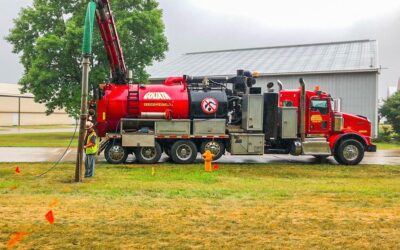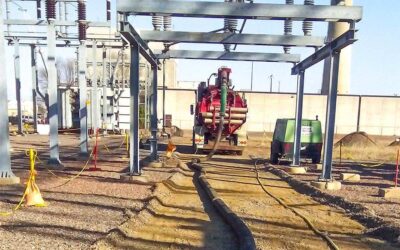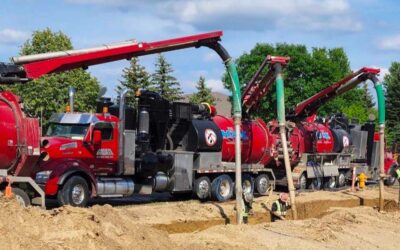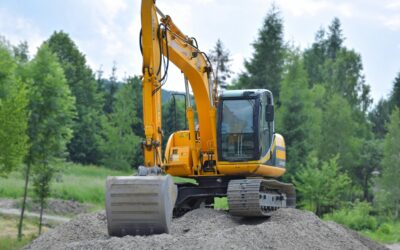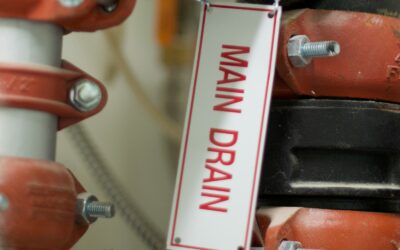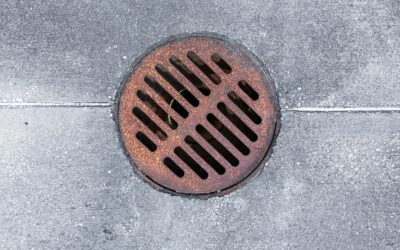Hydro Excavation Safety Tips and Procedures
Hydro Excavation Safety Tips
Hydro excavation, a cutting-edge method of digging, harnesses the power of water to break up soil and create trenches. It’s quickly becoming a preferred choice in the construction and utility sectors due to its reduced environmental impact and increased precision.
However, like all excavation methods, it comes with its own set of challenges. Paramount among these is the critical importance of ensuring safety during operations. Inadequate safety measures can have serious consequences. Accidents can jeopardize the well-being of workers, equipment can suffer damage, and projects can experience costly delays.
In this article, we will highlight the best safety practices to be adopted in hydro excavation, ensuring a safe and efficient process for all involved.
Preparing for Safe Hydro Excavation
Safe hydro excavation is a product of meticulous preparation and adherence to safety protocols. By prioritizing safety from the start, teams can ensure that projects progress smoothly without unnecessary risks or delays. Below are critical steps and measures that every team should undertake before embarking on a hydro excavation task:
1 – Pre-Job Safety Checklist
Every task should begin with a detailed pre-job safety checklist. This ensures that all the necessary safety protocols are in place, and all equipment is in optimal working condition. The checklist should be thorough, covering every aspect of the job, from equipment to personnel readiness.
2 – Equipment Inspection
All machinery and tools involved in hydro excavation should undergo a detailed inspection. This includes checking hoses for any signs of wear and tear, ensuring all valves and controls function correctly, and verifying that machinery like vacuum pumps and water tanks operate at peak performance. Any malfunctioning or worn-out equipment should be repaired or replaced before starting the excavation.
3 – Site Assessment
Before beginning the excavation, it’s crucial to conduct a comprehensive site assessment. This involves identifying potential underground utilities, understanding the soil type, and noting any environmental concerns like nearby water sources or protected habitats. By gaining a thorough understanding of the excavation site, teams can prevent unintentional damage or disruptions.
4 – Proper Documentation
All relevant documents, such as permits, site maps, and utility locates, should be available on-site. Proper documentation ensures that the team is working within legal and operational boundaries and can also be a quick reference in case of uncertainties.
5 – Safety Equipment and Gear
Ensuring that all workers are equipped with the necessary safety gear is non-negotiable. This includes:
Protective Clothing: This should be durable and appropriate for the task. It will protect workers from any debris, water splashes, or other potential hazards during excavation.
Safety Glasses: These protect the eyes from flying debris and potential splashes. They should fit snugly and be free from scratches.
Hard Hats: Vital for protecting the head from any falling objects or accidental knocks. They should be in good condition, without any visible cracks or dents.
Respirators: In environments where dust or harmful airborne particles may be present, respirators can offer invaluable protection for the respiratory system.
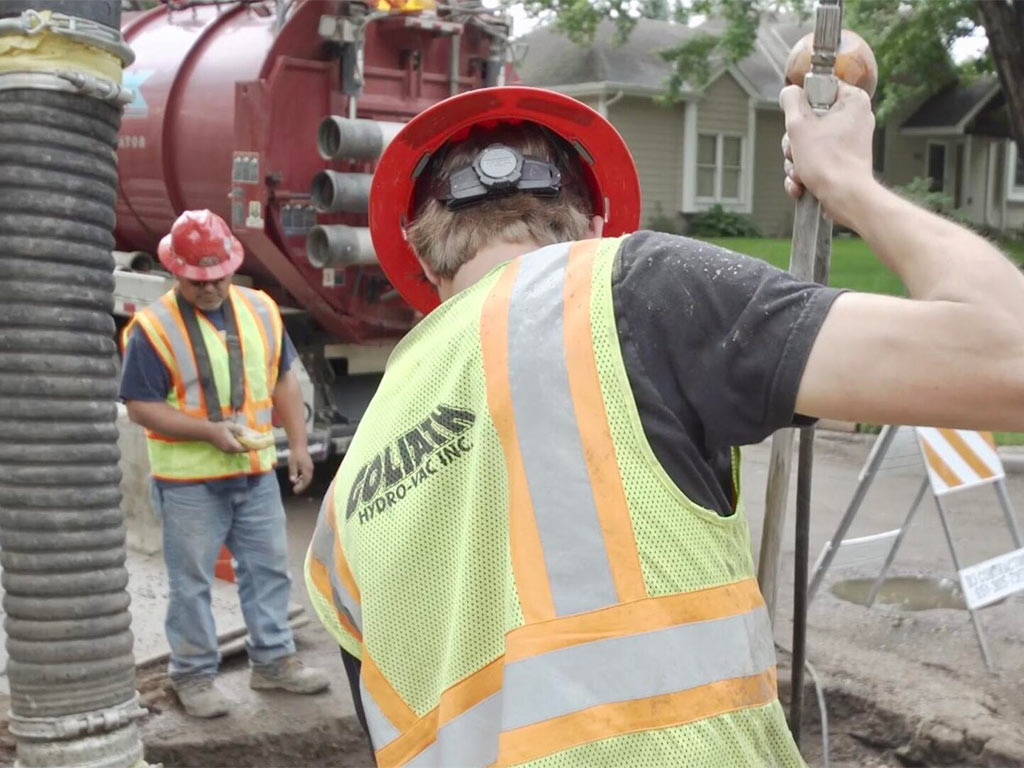
Safe Operating Procedures
To ensure the smooth progression of a hydro excavation project, it’s not only the preparation that matters but also the way in which the operation is executed. Adhering to safe operating procedures minimizes risks, protects equipment, and guarantees the well-being of every team member. Here’s a detailed look at these critical procedures:
Operating Hydro Excavation Equipment Safely: The proper operation of hydro excavation equipment is essential. Operators should be trained and familiar with the machinery, understanding its limits and capabilities. Regular training sessions and refresher courses can ensure that all team members stay updated on the best operational practices.
Proper Use of Controls: The controls on hydro excavation equipment are designed to offer precision and efficiency. Operators should know the function of each control, ensuring they’re used correctly and effectively. Misuse or mishandling can not only lead to inefficiencies but also pose serious risks.
Maintaining Safe Distance from Utilities: Striking underground utilities can have catastrophic consequences, ranging from service interruptions to severe injuries. It’s essential to maintain a safe distance when excavating near these utilities. This requires a thorough site assessment prior to beginning the job and constant vigilance during the operation.
Ensuring Proper Communication Among Team Members: Effective communication is the backbone of any successful project. In hydro excavation, where multiple moving parts and personnel are involved, it’s crucial for everyone to stay in constant communication. This can be achieved through hand signals, walkie-talkies, or other communication devices. An informed team can quickly adjust to changing situations and make on-the-spot decisions.
Responding to Emergency Situations: Despite best efforts, emergencies can arise. Whether it’s a sudden equipment malfunction, an unexpected discovery underground, or a safety concern, teams should be trained to respond promptly and effectively. This means having a clear emergency response plan in place, which all team members are familiar with. Drills and simulations can help ensure that everyone knows their role in an emergency, minimizing panic and optimizing response time.
Excavation Site Safety
The excavation site is a hub of activity during a hydro excavation project. The very nature of the task — digging into the ground — brings inherent risks, primarily when underground utilities are present. Managing these risks effectively ensures the safety of both the crew and the infrastructure. Here’s how to uphold the highest safety standards at the excavation site:
Identifying Underground Utilities
Before any excavation begins, it’s crucial to identify the location and type of underground utilities in the area. This is achieved using techniques like ground penetrating radar, utility mapping, and calling utility locating services. Properly identifying these utilities not only prevents costly damages and service interruptions but also safeguards workers from potential hazards like electric shocks or gas leaks.
Marking Utilities Correctly
Once underground utilities are identified, they should be marked accurately using standard color codes. This helps the excavation team understand what lies beneath and approach the area with caution. Always refer to local or national standards, as color codes may vary in different regions. Here’s a basic guideline for utility color coding:
Red: Electric power lines, cables, or conduits
Yellow: Gas, oil, steam, or other flammable materials
Blue: Potable water
Green: Sewage and drain lines
Orange: Communication lines, cables, or conduits
Properly Exposing Utilities
When the excavation gets close to a marked utility, it’s vital to proceed with extreme caution. The utility should be exposed slowly and gently to prevent any damage. The power of the water jet in hydro excavation can be adjusted to ensure a delicate approach. Once the utility is exposed, it can be supported or protected, if necessary, to prevent any damage during the subsequent excavation.
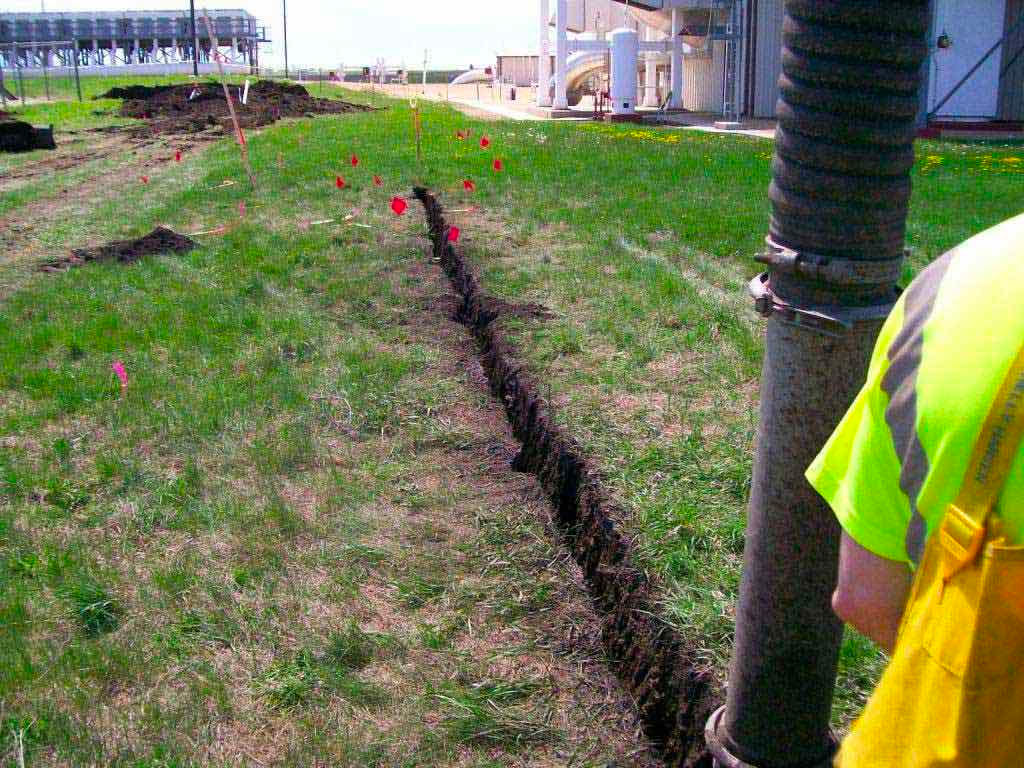
Environmental Considerations
Hydro excavation, though more environmentally friendly than traditional methods, still has potential impacts on the environment. Being proactive about these impacts and addressing them head-on is not just a matter of regulatory compliance but also a commitment to sustainable and responsible excavation. Here are some key environmental considerations to be mindful of:
Preventing Soil Erosion: Hydro excavation, by its very nature, involves the use of water to break down soil. If not managed properly, this can lead to soil erosion, which can harm local ecosystems and alter the landscape. To prevent this:
– Limit the water flow to only what’s necessary for the excavation.
– Create barriers or trenches to guide excess water away from sensitive areas.
– Use silt fences or similar mechanisms to hold the soil in place.
Containment and Disposal of Excavated Material: The slurry produced during hydro excavation must be managed responsibly. This material can contaminate water sources or degrade habitats if not handled correctly. Here are some steps to ensure proper containment and disposal:
– Use holding tanks or portable containment units to store the slurry.
– Ensure that the disposal of this material complies with local regulations. This might involve treating the slurry before disposal or transporting it to designated disposal sites.
– Consider recycling or repurposing the material, if possible. For example, some slurries can be processed and used for landscaping or construction fill.
Compliance with Environmental Regulations: Every region will have specific environmental regulations related to excavation, water use, waste disposal, and more. It’s essential to:
– Stay informed about local, state, or national environmental regulations applicable to hydro excavation.
– Obtain necessary permits and approvals before starting the excavation.
– Engage in regular audits or assessments to ensure ongoing compliance.
Weather-Related Safety
Weather plays a pivotal role in influencing the safety and efficiency of hydro excavation operations. Adverse weather conditions can introduce new hazards, complicate existing ones, and challenge the skills of even the most seasoned teams. Being aware of these potential challenges and implementing precautions is essential. Let’s explore the safety measures related to specific weather conditions:
Working in Adverse Weather Conditions:
Wind: Strong winds can affect the stability of equipment, blow away lightweight materials, or obstruct visibility with dust. In such situations, secure loose items, ensure stable anchoring of equipment, and consider using windbreaks.
Extreme Temperatures: Both scorching heat and freezing cold can affect equipment performance and worker health. Ensure machinery is adapted for temperature extremes and provide workers with breaks, hydration in heat, or warming periods in cold.
Visibility: Fog, heavy rain, or snow can reduce visibility. If visibility becomes too compromised, it might be safest to halt operations until conditions improve.
Rain and Slippery Conditions:
Soil Instability: Excess water can make the soil unstable or cause it to collapse. Ensure trench walls are shored or sloped appropriately.
Slip Hazards: Wet conditions can make surfaces slippery. Use slip-resistant footwear, ensure walkways are free of mud and debris, and set up warning signs in slippery areas.
Equipment Performance: Wet conditions can affect equipment functionality. Ensure all machinery is in good working order and suitable for wet conditions. Protect electrical components from water infiltration.
Lightning Safety Precautions:
1 – Suspend operations at the first sign of nearby lightning or the sound of thunder. Remember: If you can hear thunder, you’re close enough to be struck by lightning.
2 – Seek shelter immediately. Avoid standing under isolated trees or near tall objects. Enclosed buildings or vehicles are the safest places.
3 – Stay away from electrical equipment, metal objects, and standing water. Wait at least 30 minutes after the last clap of thunder before resuming operations.
Conclusion – Hydro Excavation Safety Tips and Procedures
From pre-job preparations to adapting to unpredictable weather conditions, a proactive stance on safety ensures not only the well-being of personnel but also the integrity of the environment and infrastructure.
Goliath Hydrovac Inc. has been in the excavation industry for over 20 years. We are a trusted provider of hydrovac services throughout the midwest. Goliath Hydrovac Inc. is committed to providing exceptional excavation services tailored to your specific needs.
Contact us at 612-727-3444 today to learn more about how Goliath’s hydrovac excavation services can benefit your operation.
RELATED POSTS
Hydrovac Excavation In The Winter: Cold Weather Digging
Do you believe that excavating in winter is more difficult, more expensive, and more time consuming? Is it...
What is Utility Potholing and Which Method is Best?
Utilities. They’re everywhere, enabling and protecting our comfortable, modern lives. Unfortunately,...
How Deep Can You Hydrovac Excavate?
Hydrovac excavators come in many forms and are often custom-built for the companies ordering them. This means...
Hydro Vacuum vs Air Vacuum Excavation: Pros & Cons
At first glance, hydro vacuum excavation and air vacuum excavation are confusingly similar. After all, their...
Hydrovac Excavation 101: Everything You Need to Know
Hydrovac excavation has been around, in one form or another, for decades now. However, a lot of professionals...
Hydrovac Excavation vs. Traditional Excavator: Which Method Is Better?
On the surface, excavation couldn’t be simpler. Just…remove the dirt. However, the choice of excavation method...
Choosing the Right Industrial Sewer Maintenance Services
The maintenance of industrial sewer systems is a critical aspect of ensuring the smooth operation of any...
How to Prevent Industrial Sewer Blockages
Industrial sewer blockages are not just a minor inconvenience; they can be a major hazard with significant...
Importance of Regular Sewer Inspections
Industrial sewer inspections are a critical component of maintaining a facility's infrastructure. These...
Essential Industrial Sewer Maintenance Tips
Industrial sewer maintenance is a critical aspect of maintaining the efficiency and safety of any facility....


